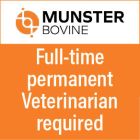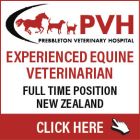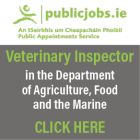Wildlife crime in Ireland – cause and effect
In this article, Mark Naguib BVMS(Hons) CertAVP(ZooMed) MRCVS and Séan David Byrne, Trinity College Dublin zoology graduate provide a comprehensive overview of wildlife crime in Ireland and the role of the veterinary practitioner in the treatment of the animals at the centre of these crimes
Despite the presence of legislation and greater public awareness, wildlife crime is an increasing problem in Ireland. As such, veterinary surgeons may be asked to play both a clinical and a forensic role in cases of deliberate shooting, poisoning, trapping, fighting and taking of wild animals. Dealing with wildlife-crime cases can be challenging because animals often present as severely compromised or dead and because the cause of morbidity and mortality may not be readily ascertained. Much wildlife crime goes unreported and prosecutions are still relatively few. The use of new technology is likely to aid increased reporting of incidents. As with any wildlife we treat clinically, the aim should always be true rehabilitation – the release of the animal back into the wild in a fully fit state, as rapidly as possible, without compromising its welfare.

Table 1. Wildlife-related legislation

Table 2. Wildlife crime – important contacts.
Recording and reporting
Good record keeping, is essential for all wildlife casualties and is particularly important for the investigation of suspected criminal activity. Full details of the finder, the exact geographical location in which the animal was found, any food or treatment administered and the duration of time the animal has been in the finder’s possession are essential. Details of suspicious persons and their vehicles should also be noted. Suspected wildlife crimes should be reported to the National Parks and Wildlife Service (NPWS) in the first instance or An Garda Síochána. Radiographs of the casualty should be clearly labelled, and any injuries and post-mortem findings should be photographed at the time.
Partnership for Action Against Wildlife Crime
Partnership for Action Against Wildlife Crime (PAW Ireland) brings together statutory agencies, non-statutory agencies and interested parties with the common goal of combating wildlife crime through publicity, education and campaigning. PAW Ireland and the Wildlife Crime Reporting app was launched at the Wildlife Crime & Conservation Conference 2020, which took place on October 24-25. This ground-breaking app will allow users to accurately report suspected wildlife crimes, find relevant contact details for wildlife rescuers and rehabilitators, and provide contact details for investigative authorities in Ireland.
Poisoning of birds of prey
The poisoning of birds of prey throughout the country continues. In 2019 alone, there were two high-profile cases of carbofuran poisoning. The first incident involved Mary, the hen harrier, who was being tracked by the EU Hen Harrier LIFE Project until she was killed in Co. Meath at the start of December. The second major incident, which happened later that month, involved the killing of 23 buzzards in Co. Cork. This was the largest-known fatal mass poisoning of birds of prey since legislation was amended to better protect these animals in 2010.
The most common poisons employed against birds of prey are alphachloralose, carbofuran, nitroxinil, metaldehyde and anticoagulant rodenticides. The clinical signs may be broadly similar and often these birds will present as dead or dying. Table 3 summarises the common poisons, their clinical presentations and specific treatments. Birds found dead in good body condition with no obvious injuries may be victims of deliberate poisoning. A full crop implies sudden death, and its contents should always be examined.When handling birds that are suspected to be poisoned, staff should wear appropriate PPE and advise members of the public bringing in birds to do the same. Living birds of prey use their feet as their main weapons and are best handled with a towel, with the wings wrapped and the feet properly secured. Gauntlets can be employed but reduce finger dexterity and interfere with clinical examination. If death has already occurred or euthanasia is performed, carcases should be retained and the NPWS should be informed. Carcases can be stored frozen for toxicology analysis. Faecal samples should also be retained if possible. For the majority of toxins, if the animals present early enough, veterinary treatment is largely supportive with specific treatments limited to vitamin K in cases of rodenticide poisoning, atropine for carbofuran and anti-seizure medications where metaldehyde toxicity is suspected. Patients should be kept in warm, thermostatically controlled (ideally) accommodation at a temperature between 25-30oC. This should (ideally) be separate from dogs and cats and be as quiet as possible. If the bird can keep its head up, is not vomiting and the crop is functioning, gavage feeding oral fluids is the best route for fluid therapy. Birds that are collapsed should receive intravenous or intraosseous fluid therapy initially. The medial metatarsal and brachial veins are suitable for cannulisation while the ulna is the best site for intraosseous cannula placement. A limited amount of subcutaneous fluid can be given into the prefemoral leg folds. Once stable, birds of prey should be transferred to an experienced wildlife rehabilitator and not kept at the surgery longer than needed.

Figures 1A and B: A red kite with anticoagulant rodenticide toxicity. Note the paleness of the pectoral musculature and the intracoelomic haemorrhage.

Figure 2: A goshawk demonstrating neurological signs. These signs can be seen with metaldehyde toxicity but are not unique and can be seen with other diseases including lead poisoning, hypocalcaemia and viral and bacterial meningitis.
Shooting
The deliberate shooting of birds of prey is, unfortunately, common. If open fractures are present or fractures are present very close to joints, euthanasia is warranted. Prior to radiography or any further decisions, all birds should undergo a full clinical examination. Permanent damage to an eye, systemic disease, severe propatagial damage, open fractures or fractures in close proximity to joints warrant euthanasia on the basis that rehabilitation is unlikely to be successful.

Figures 3A and B: Use of a tie-in fixator to repair a femoral fracture in a buzzard. Figure 3B demonstrates the callus formation after three weeks.

Figure 4: Buzzards may survive on the ground by scavenging and eating insects and may present with old fractures that have healed in a manner that prevents flight.
Some species, such as buzzards, can survive for weeks on the ground eating invertebrates and scavenging, and may have fractures that have already healed in a manner incompatible with flight. When decision-making, consideration should be given to the flight and behaviour of the species in question. A red kite, for example, may cope well with an injury that would be not be acceptable in a bird such as a peregrine falcon or a kestrel with a very different manner of flight. Stabilisation is carried out in much the same way as discussed for birds that have been poisoned, however, the addition of analgesia is essential. Meloxicam at 0.5mg/kg po subcutaneously (SC) bid alongside butorphanol 1-2mg/kg SC bid is suitable for most wild bird species encountered. Radiographs should be examined carefully – orthogonal views of the coelom are required as well as the wings. Particular attention should be paid to the shoulder apparatus – a properly positioned ventro-dorsal view is essential to evaluate this area properly. Projectiles such as shotgun or rifle pellets are readily identified although knowing if they are historic or related to current injuries is not always straightforward. The presence of fractures, obvious entry/exit wounds and feather damage may help. As a general rule, projectiles should not be removed unless easy to access under the skin or if they are likely to be causing a problem. In the majority of cases, shotgun pellets and rifle shot can be left in situ in deeper tissue.

Figures 5A and B: Ulnar fractures with an intact radius often do well without surgery. In this marsh harrier, illegally shot with a shotgun, a feather splint has been usd to stabilise the ulna. This bird went on to a full recovery and was succesfully released.
Many avian fractures do not require surgery. Better outcomes are usually seen with cage rest for straightforward coracoid, scapular and ulnar fractures. External coaptation in the form of feather splints, sandwich of cardboard taking advantage of the fact that the primaries and secondaries are directly attached to periosteal bone, can be useful in managing carpal and some ulnar fractures. Distal limb fractures, particularly tarsometatarsal fractures in small birds can often be managed with splints made from cotton-tipped applicators or similar. For the majority of fractures that require surgical repair, the use of a tie-in fixator (TIF) consisting of an intramedullary pin and a type 1 external fixator is the most common method. Fracture healing time usually takes between three and five weeks depending on the fracture, the bone involved, the age and species.
In the case of dead or euthanised birds, orthogonal radiographs should be taken prior to post-mortem examination. Any pellets or shot removed at post-mortem should be labelled and retained.

Figures 6: Pole trap leading to bilateral tarsometatarsal fractures. In this case, there was damage to the blood and nerve supply to the feet.
Nest interference, egg and chick theft
The nests of birds, particularly birds of prey, may be targeted by egg collectors and by those looking to sell chicks. Some birds of prey such as peregrine falcons can fetch large sums of money and many are governed by CITES legislation. If presented with a young bird suspected of being caught in the wild, the NPWS should be contacted. They may request blood samples are taken in order for parentage to be established via DNA analysis. These birds are ideally placed back into a nest in the wild, if a suitable one can be found, or reared in such a way that they do not become imprinted. An experienced raptor rehabilitator should be consulted.
Deer poaching
There are specified hunting seasons for licensed deer hunters; however, the problem of illegal poaching for meat and for entertainment remains. The Irish Deer Commission, supported by An Garda Síochána and several NGOs, have aimed to inform the public about recent increases in illegal poaching. Fallow, Red, and Sika Deer are protected species, as they are considered a part of the country’s natural heritage. The Gardaí receive about 500 reports of illegal poaching annually with the real number probably being much higher. Methods of killing deer include being shot by high-powered rifles, being set upon by hunting dogs and being bludgeoned to death. These activities may occur during the day or at night, and often involve trespassing onto private property to hunt deer.

Figures 7A and B: Illegally poached deer demonstrating dog-bite wounds.
Deer who have survived poaching attempts but may still be injured will show clear signs. They may have damaged limbs, physical wounds from bullets or blunt weapons and they generally only allow the approach of a person if they are badly injured. Deer are, potentially, dangerous and capture requires experienced personnel and appropriate equipment. A vet, the NPWS or other authority such as the Gardaí should be called straight away if such deer are encountered. Unless there is clear evidence that a fawn is motherless, it should be observed for 48 hours – it is normal for hinds to leave fawns for extended periods. Fawns can be wrapped in blankets and towels before being placed in large dog carriers.
In many cases, veterinary care will be limited to euthanasia as injuries are often severe. Full assessment of adult deer where things are not clear cut, is best done under general anaesthesia. Rehabilitation of deer is a specialist undertaking and these animals should not remain in a veterinary surgery longer than absolutely necessary. Forensic examination of dead deer should be detailed and accompanied by photographic evidence of external and internal wounds. Wounds should be probed to determine their extent. Careful examination of bite wounds may reveal dog hairs which should be collected as they are sometimes used to link seized dogs to poaching crimes.
Badger baiting
Badger baiting involves using dogs to corner a badger in a sett in order to dig them out and make them fight with dogs, inevitably ending in the death of the badger as well as severe injury to the dogs. Pregnant or lactating badgers are often targeted during January and February, as mothers fight to the death to protect their young, reducing the chance of the badgers running away. Unfortunately, despite being illegal, badger baiting has increased in recent years, fuelled by the ability to organise baiting via social media. Badgers who have survived baiting will, more than likely, have obvious injuries such as open wounds or damaged limbs. Badgers should never be examined while conscious and proper equipment is required to capture and transport them prior to full examination under anaesthesia. Dog catchers and crush cages to facilitate anaesthesia are strongly advised.

Figures 8A and B: Evisceration is often seen in badger baiting cases. Pregnant females are often targeted.
Baiting injuries should be differentiated from conspecific injuries. Young badgers may have severe and extensive wounds to their rumps in the late summer and autumn due to conflicts over territory. Dogs tend to inflict multiple deep puncture wounds as well and often end up eviscerating the badger. Radiography and ultrasound performed under general anaesthesia are advised to rule out pneumothorax, haemothroax, haemoabdomen and uroabdomen from a ruptured bladder.
Puncture wounds should be left open and even extensive skin deficits heal remarkably well by second intention. Covering antibiotics and multimodal analgesia should be given. Antibiotics and analgesia doses are similar to those that would be administered to domestic dogs. Intravenous fluids can be given while under anaesthesia, but cannulas should be removed prior to recovery as these are poorly tolerated and cannot be safely maintained in most cases. As with other wild species, transfer to an experienced wildlife rehabilitator is advised as soon as the animal is stable.

Figure 9: Badger conspecific injury – typically these injuries are focused around the rump area in young badgers.
Dogs that have been involved in badger baiting often have no form of identification and extensive and severe injuries to the head and face. There may be scarring from previous baiting incidents. All such injuries should be documented photographically prior to treatment. Suspected badger baiting should be reported to the NPWS or An Garda Síochána. Dead badgers should be submitted for post-mortem examination or should undergo in-practice post-mortem on request of the authorities. All injuries should be documented photographically. Any samples of dog hair in wounds should be retained. The NPWS will advise on each individual situation.

Figure 10: Typical facial injuries in a dog used for badger baiting.
Illegal coursing
Coursing involves the pursuit of hares using greyhounds and other dogs, who are tested on their ability to run, overtake, and turn the hare, but not to capture it. The Irish government provides licences to course hares under the Wildlife Acts, but the dog must be muzzled. Even in legal coursing where the dogs are muzzled, hares still sustain injuries such as broken legs, damaged toes and dislocated hips. Illegal coursing involves either an unmuzzled dog chasing hares or the activity of coursing being done without a licence.
Wild lagomorphs are extremely easily stressed and may injure themselves or scratch handlers when picked up. The pelvic and shoulder girdles should be supported when lifting and towels are strongly advised. Stressed rabbits and hares will not eat and may go into gut stasis. Multimodal anaesthesia and ensuring that ileus does not develop are essential as with domesticated rabbits. Careful consideration and evaluation of injuries should be undertaken alongside thought to the welfare of the animal in rehabilitation prior to proceeding with treatment.
Illegal traps and snares
A raft of legislation governs the legality of traps and snares, with a number of restrictions in place to prevent the targeting of protected wildlife. It is beyond the scope of this article to detail them and instead the reader is referred to the Wildlife Crime Ireland website. Suspected illegal snares and traps and resulting injuries should be documented and the NPWS or An Garda Síochána contacted – do not attempt to remove them. In recent years, illegal pole traps and Fenn traps have made a resurgence. These are leg-snap traps placed illegally on the tops of poles with the deliberate intention of targeting birds of prey. Leg fractures should be critically assessed prior to attempting treatment. The force of these traps may result in permanent leg-nerve damage or loss of blood supply.
Animals in snares should be approached with caution in order to prevent further injury to the animal or injury to the rescuer. Ideally, the snare should be cut from its anchor and the animal transported with the snare. All snare injuries should be examined under general anaesthesia as the underlying damage can be severe, often disguised by the fur. In addition, some of these animals will have wounds or fractures from escape attempts. Release should only occur once the veterinary surgeon is satisfied there are no injuries that would compromise survival.
Conclusion
While dealing with wildlife crime can be frustrating, veterinary staff are often on the front line and have a valuable role to play in treating injured animals, performing humane euthanasia, assisting the authorities and raising public awareness of the problems our native wildlife faces.
Figures 1-10 copyright Mark Naguib and Jean Thorpe.
1. Who should suspected wildlife crimes be reported to?
A. Wildlife Crime Ireland
B. Veterinary Council of Ireland
C. National Parks and Wildlife Service
D. Irish Wildlife Trust
2. How does alphachloralose kill birds?
A. It’s a general anaesthetic acting on GABA receptors
B. It causes hyperthermia and hypertension
C. It prevents coagulation
D. It inhibits cholinesterases
3. When is gavage feeding contraindicated in birds?
A. If they can’t keep their head up
B. If they are vomiting
C. If they have crop stasis
D. All of the above
4. Which fractures in birds carry a poor prognosis?
A. Open fractures
B. Fractures close to joints
C. Highly comminuted fractures
D. All of the above
5. A badger is brought in with a snare around its neck. You should:
A. Place a secure muzzle and remove the snare. Release the badger after 48 hours of observation and antibiotics.
B. Use a dog catcher to restrain the badger and remove the snare. Release the badger after 24 hours of observation.
C. Induce general anaesthesia, remove the snare, do a full clinical examination, provide antibiotics if needed, analgesia and fluids.
D. Get permission from the NPWS before treating the animal.
6. Which of these deer species are not protected in Ireland?
A. Red
B. Fallow
C. Muntjac
D. Sika
Answers: 1C; 2A; 3D; 4D; 5C; 6C.









